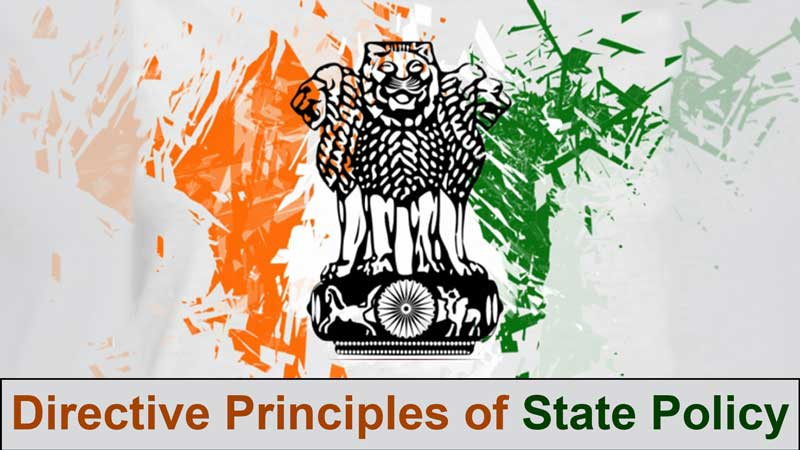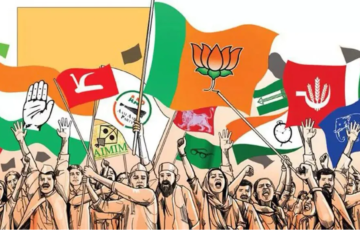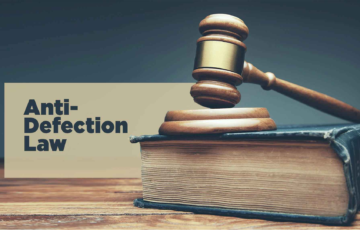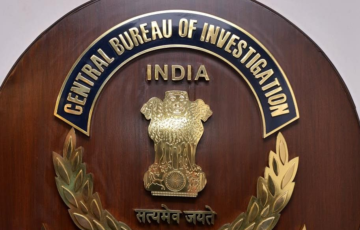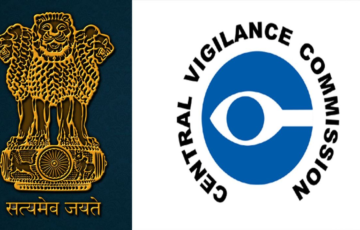DIRECTIVE PRINCIPLES OF STATE POLICY
Introduction
- The Directive Principles of State Policy (DPSP) in the Indian Constitution, which are enumerated in Part IV, were inspired by the Irish Constitution. The primary objective of DPSP is to establish a “Welfare State.” Unlike the focus on political democracy, DPSP aims to create social and economic democracy within the state. These principles serve as fundamental guidelines and recommendations for the government when formulating laws and policies for the country and implementing them.
- B. R. Ambedkar considered DPSP as a “novel feature” of the Constitution. While DPSP provides valuable guidance to the state, it’s important to note that the government is not legally bound to follow or implement all the principles outlined in DPSP. DPSP is non-justiciable, meaning that citizens cannot enforce these principles through the courts. Instead, they serve as a moral and ethical compass for the government to consider when making policy decisions that promote the welfare and well-being of the people.
Features of DPSP
- The Directive Principles of State Policy (DPSP) are a set of guidelines and principles enshrined in the Constitution of India. They are not enforceable by the courts but are fundamental in the governance of the country. Some key features of the DPSP in India are as follows:
- Non-Justiciable: The DPSPs are non-justiciable in nature, which means that they are not legally enforceable by the courts. Unlike fundamental rights, citizens cannot directly approach the courts to seek remedies for violations of DPSPs. Example: A citizen cannot file a legal case against the government solely on the grounds that it did not fully implement a specific DPSP, such as providing free and compulsory education for children under Article 45.
- Moral and Political Obligation: While not legally enforceable, DPSPs place a moral and political obligation on the state to strive towards their realization. The government is expected to consider these principles while formulating policies and laws. Example: The government, guided by DPSP, might introduce policies and programs to provide subsidies and financial assistance to farmers, as stated in DPSP Article 48, to uplift rural agriculture and animal husbandry.
- Social and Economic Justice: DPSPs aim to establish a welfare state in India by promoting social and economic justice. They include provisions for equitable distribution of resources, protection of vulnerable sections of society, and the promotion of the common good. Example: The reservation of seats for Scheduled Castes and Scheduled Tribes in educational institutions and government jobs, as outlined in DPSP Article 46, is aimed at promoting social justice and reducing historical disadvantages.
- Comprehensive and Diverse: DPSPs cover a wide range of subjects, including social, economic, cultural, educational, and environmental issues. They reflect the comprehensive vision of the framers of the Indian Constitution for the development of a just society. Example: DPSPs cover various aspects, including the promotion of cottage industries (Article 43), the protection of historical monuments (Article 49), and the promotion of scientific temper and humanism (Article 51A).
- Balancing Fundamental Rights: DPSPs need to be balanced with fundamental rights. While fundamental rights provide individual liberties and protections, DPSPs guide the state in creating a just and equitable society. Example: While citizens have the fundamental right to freedom of trade and profession (Article 19(1)(g)), the state can regulate and restrict these rights to ensure the economic welfare of the nation, as per DPSP Article 38.
- Instrument of Social Transformation: DPSPs are seen as instruments for bringing about social transformation and achieving the objectives of a welfare state. They are intended to bridge socio-economic disparities. Example: The government may introduce land reforms and redistribute land to landless laborers, as suggested in DPSP Article 39(b), to reduce economic disparities and empower the rural poor.
- Flexible and Evolving: The DPSPs can be adapted and modified by the government over time to reflect changing social and economic conditions. This allows the principles to remain relevant in different contexts. Example: Over time, the government can modify DPSPs to address new challenges. For instance, it may update policies related to environmental protection (Article 48A) to address emerging ecological concerns.
- Inspired by International Law: Some of the DPSPs are inspired by international conventions and agreements, reflecting India’s commitment to global ideals of justice and development. Example: The provision in DPSP Article 51, which encourages the promotion of international peace and security, aligns with India’s commitment to international agreements and organizations.
- Not Absolute: The DPSPs do not provide specific, fixed obligations on the state. They allow for flexibility in implementation, and the government can prioritize and allocate resources based on prevailing circumstances. Example: The government may allocate resources based on current priorities. During a health crisis, resources may be directed toward healthcare infrastructure and vaccination campaigns, reflecting the dynamic nature of resource allocation.
- Role in Judicial Review: While DPSPs are not enforceable on their own, they can be used as an aid in interpreting fundamental rights and determining the constitutionality of laws. Courts may consider whether a law or policy aligns with the DPSPs when examining its constitutionality. Example: Courts may consider DPSPs when examining the constitutionality of laws. If a law disproportionately impacts marginalized communities and is not in line with DPSP principles of social justice, it may be deemed unconstitutional.
Classification of DPSP
- While the Indian Constitution itself does not explicitly classify Directive Principles of State Policy (DPSP), scholars and legal experts have indeed categorized them into three broad groups based on their content and direction:
Socialistic DPSP:
- These principles reflect the socialistic ideals enshrined in the Constitution. They emphasize economic and social justice and the welfare of the people. Examples of socialistic DPSP include Article 38, which calls for the promotion of the welfare of the people, and Article 39, which focuses on preventing concentration of wealth and resources.
- Article 38 emphasizes the state’s duty to ensure social, political, and economic justice for all citizens. It also directs the state to reduce inequalities in income, status, facilities, and opportunities.
- Article 39 outlines principles that the state must follow, including providing citizens with an adequate livelihood, distributing community resources for the common good, preventing wealth concentration, ensuring equal pay for equal work, protecting worker health, and promoting children’s well-being and freedom from exploitation. These principles reflect the Constitution’s commitment to social justice, economic equity, and the welfare of all citizens, particularly vulnerable groups.
- Article 39A focuses on ensuring equal access to justice for all citizens. It mandates the state to provide free legal aid through suitable legislation or schemes, thereby eliminating barriers to justice based on economic backwardness or disabilities.
- Article 41 highlights the government’s role in promoting welfare. It calls for the provision of the right to work and public assistance in cases of unemployment, old age, disablement, or other economic challenges. This article forms the basis for various social sector schemes aimed at ensuring economic security, such as MGNREGA and old-age pension programs.
- Article 42 emphasizes the importance of just and humane working conditions for citizens. It also stresses the need for maternity relief for women, recognizing the significance of maternal well-being.
- Article 43 focuses on labor rights and economic development. It encourages the state to secure living wages and decent working conditions for all workers, whether in agriculture, industry, or other sectors. The article also promotes rural development through individual or cooperative cottage industries.
- Article 47 addresses public health and well-being. It directs the state to raise the nutrition levels and standard of living for its people. Additionally, it calls for measures to curb the consumption of harmful substances. Various social development programs, like the National Health Mission and Mid Day Meal Scheme, draw inspiration from this directive to target marginalized sections of society, including women, children, and weaker sections, for their welfare and health.
Gandhian DPSP:
- These principles draw inspiration from the teachings of Mahatma Gandhi, emphasizing rural development, self-sufficiency, and decentralized governance. Gandhian DPSP include Article 40, which promotes organization of village panchayats, and Article 47, which seeks to prohibit the consumption of intoxicating drinks and drugs harmful to health.
- Article 40 emphasizes the organization of Panchayats (local self-government institutions) and grants them necessary powers to function as units of self-government. It forms the basis for the Panchayati Raj system.
- Article 43 focuses on ensuring fair wages and a decent standard of life for all workers, whether in agriculture, industry, or other sectors. It also encourages the promotion of cottage industries in rural areas.
- Article 43B, inserted by the 97th Amendment Act in 2011, underscores the state’s role in promoting cooperative societies, particularly for the benefit of those engaged in cooperatives.
- Article 46 directs the state to promote the educational and economic interests of the weaker sections of society, including Scheduled Castes (SCs) and Scheduled Tribes (STs). It also requires provisions to protect them from all forms of exploitation and social injustice.
- Article 47 addresses public health, nutrition, and the prohibition of harmful substances. It instructs the state to raise nutrition levels, standard of living, and public health while endeavoring to prohibit the consumption of intoxicating drinks and drugs, except for medicinal purposes. Various social development programs, such as the National Health Mission and Mid-Day Meal Scheme, aim to fulfill these objectives.
- Article 48 highlights the state’s duty to promote scientific agriculture and animal husbandry using modern methods and techniques. It encourages the preservation and improvement of existing breeds and prohibits the slaughter of cows and other cattle. This article supports advancements in agriculture and animal husbandry for economic development and livelihood improvement.
Liberal-Intellectual DPSP:
- These principles align with liberal and intellectual values, emphasizing individual freedoms, education, and cultural preservation. Examples include Article 44, which promotes a uniform civil code for the citizens, and Article 51A, which encourages the promotion of scientific temper and humanism.
- Article 44 calls for the establishment of a Uniform Civil Code throughout India to simplify and standardize personal laws, reducing complexity and ambiguity.
- Article 45 mandates the state to provide free and compulsory education for children up to the age of 14 within ten years of the provision’s commencement. This was added by the 86th Amendment in 2002.
- Article 48 focuses on organizing agriculture and animal husbandry using modern and scientific technology, preserving existing breeds, and prohibiting the slaughter of cows and other cattle for the development of agricultural practices.
- Article 48A highlights the state’s duty to protect and improve the environment and safeguard forests and wildlife, promoting environmental sustainability.
- Article 49 requires the state to protect monuments, places, and objects of national importance from disfigurement, destruction, or harm.
- Article 50 emphasizes the separation of the judiciary from the executive branch of the government in public services to ensure the independence of both branches.
- Article 51 outlines the state’s commitment to promoting international peace, friendly relations between nations, respect for international law and treaties, and the settlement of international disputes through arbitration.
- These articles collectively reflect various aspects of social, economic, and political development, cultural and educational provisions, environmental protection, and the promotion of peace and harmony on the national and international levels.
New DPSP
42nd Amendment Act
- The 42nd Amendment Act, 1976, made several changes to the Constitution of India, including the addition of new Directive Principles of State Policy. These principles aimed at guiding the government in its policy-making and governance. The four Directive Principles that were added by the 42nd Amendment:
- Article 39 – This article emphasizes the need to secure opportunities for the healthy development of children. It directs the State to ensure that children are given opportunities and facilities to develop in a healthy manner and in conditions of freedom and dignity.
- Article 39A – This article focuses on promoting justice, especially social justice. It mandates that the State shall promote justice on the basis of equal opportunity and provide free legal aid to ensure that opportunities for securing justice are not denied to any citizen due to economic or other disabilities.
- Article 43A – This article directs the State to take steps, through suitable legislation or other means, to secure the participation of workers in the management of undertakings, establishments, or other organizations engaged in any form of economic activity.
- Article 48A – This article emphasizes the importance of environmental protection. It requires the State to endeavor to protect and improve the environment, safeguard forests and wildlife, and ensure a livable environment for the people of the country.
- These additions were made to strengthen the social and economic aspects of governance and to promote justice, equality, and environmental protection in India.
44th Amendment Act
- The 44th Amendment Act of 1978 did indeed make an important addition to the Directive Principles of State Policy (DPSP) in the Indian Constitution.
- It added Article 38(2) to the DPSP. Article 38(2) states that the State shall work to minimize the inequalities in income and endeavor to eliminate inequalities in status, facilities, and opportunities, not only amongst individuals but also among groups of people residing in different areas or engaged in different vocations.
86th Amendment:
- The 86th Amendment Act of 2002 indeed changed the subject of Article 45 in the Directive Principles of State Policy (DPSP). It shifted the focus from children below 6 years of age to children between the age group of 6 to 14 years. Article 45 was renumbered as Article 21-A and made it a fundamental right under Part III of the Constitution. Article 21-A guarantees the right to education to children in the age group of 6 to 14 years, making elementary education a fundamental right for them.
97th Amendment:
- The 97th Amendment Act of 2011 did insert Article 43-B into the DPSP. Article 43-B emphasizes the State’s role in promoting cooperative societies. It states that the State shall endeavor to promote voluntary formation, autonomous functioning, democratic control, and professional management of cooperative societies. This amendment aimed at strengthening the cooperative movement in India by providing a constitutional mandate for the promotion and protection of cooperative societies.
Enforceability of DPSP
- The Constituent Assembly, which was established to create the Indian Constitution, did not make DPSP binding. The Principles are not mandatory, but that doesn’t mean they aren’t significant. Some arguments are in favour of making DPSP enforceable, while others are against it.
- Arguments in Favor of Enforceability:
- Check on the Government: One of the key arguments in favor of making DPSP enforceable is that it can serve as a check on the government’s actions. Enforceable DPSPs could provide a legal basis for citizens to hold the government accountable for not implementing policies that promote social and economic justice.
- National Unity: Enforceable DPSPs, when implemented, can contribute to national unity by ensuring that policies aimed at reducing inequalities, promoting social welfare, and creating a more just society are followed consistently across states and regions.
- Uniform Civil Code: As you mentioned, Article 44 of the Indian Constitution discusses the Uniform Civil Code, which is a contentious issue. Enforceable DPSPs could potentially expedite the process of implementing a uniform civil code, which has been a longstanding constitutional goal.
- Arguments Against Enforceability:
- Redundancy: Some argue that making DPSPs enforceable is unnecessary because many of these principles are already reflected in existing laws and policies. In essence, they contend that DPSPs are already indirectly implemented through other legal mechanisms.
- Moral Imposition: Critics argue that enforcing DPSPs could lead to the imposition of certain moral and ethical values on citizens. They argue that law and morality are distinct, and enforcing moral principles through legal means may hinder societal development and individual freedoms.
- Resource Constraints: Enforcing DPSPs might require significant financial and administrative resources, which could strain the government’s capacity and lead to inefficiencies in implementation.
- Ultimately, the decision to make DPSPs enforceable or non-enforceable was a conscious choice made by the framers of the Indian Constitution. It strikes a balance between setting important social and economic goals for the government to pursue while allowing flexibility in implementation. The debate surrounding this issue reflects the complex challenges of governance and policymaking in a diverse and democratic society like India.
Significance of DPSP
- Voice of the People: DPSPs are rooted in the “vox populi,” representing the voice of the people. While they may not be directly enforceable, they reflect the collective will and aspirations of the citizens, which influence the government’s actions.
- Welfare System Foundation: DPSPs lay the philosophical foundations of a welfare system, making it the responsibility of the state to enact welfare legislation. They guide the government in creating policies that promote the welfare and well-being of citizens.
- Moral Ideals: DPSPs provide a moral code for the state, emphasizing the importance of moral principles in governance. While they are non-justiciable, they hold value as they help maintain ethical standards in lawmaking.
- Guidance for Government: DPSPs act as a guide for the government, aiding in the formulation of policies and laws aimed at ensuring justice and welfare in the state.
- Continuity in Governance: In a democratic system with changing governments, DPSPs provide a source of continuity. They ensure that successive governments consider these principles when making laws, promoting consistency in governance.
- Complementary to Fundamental Rights: DPSPs complement Fundamental Rights by addressing social and economic dimensions of democracy, while Fundamental Rights protect political rights and freedoms.
- Measure of Government’s Worth: Citizens can use DPSPs as a measure of a government’s performance. A government that neglects these principles may be held accountable by the people in favor of a government that upholds them.
- Reflecting Constitutional Philosophy: DPSPs reflect the philosophy and ideas of the Constitution’s drafters. They offer valuable insights to the courts for interpreting existing provisions and shaping better laws and policies.
- Flexibility: DPSPs are not rigid in their meanings, allowing the state to interpret and apply them according to the prevailing circumstances, ensuring adaptability.
- In essence, DPSPs contribute significantly to the foundational principles of a democratic and welfare-oriented state, serving as a guide for policymakers and reflecting the values and aspirations of the Indian Constitution. They complement the Fundamental Rights, creating a balanced framework for governance.
Implementation of DPSP
- One recent example of the implementation of the Directive Principles of State Policy (DPSP) in India is the National Rural Health Mission (NRHM), which was launched in 2005. The NRHM is a comprehensive program that aims to improve the health status of rural India. It is based on the DPSP that the state shall direct its policy towards securing the right of all to an adequate means of livelihood and to make effective provision for securing the right to work, education, and to public assistance in cases of unemployment, old age, sickness and disablement, and in other cases of undeserved want (Article 41).
- The NRHM has been very successful in improving rural health outcomes in India. For example, the infant mortality rate has declined from 57 per 1,000 live births in 2005 to 35 per 1,000 live births in 2021. The maternal mortality ratio has also declined from 254 per 100,000 live births in 2005 to 113 per 100,000 live births in 2021.
- Another recent example of the implementation of the DPSP is the Right to Education Act (RTE), which was enacted in 2009. The RTE Act guarantees free and compulsory education to all children aged 6 to 14 years. This is a landmark piece of legislation that has helped to increase the enrollment of children in schools and reduce dropout rates.
- The RTE Act is based on the DPSP that the state shall direct its policy towards securing the right of all children to free and compulsory education for a period of ten years (Article 45).
- These are just two examples of the many ways in which the DPSP are being implemented in India. The DPSP are a set of guidelines that the state must follow in order to create a just and equitable society. They are a reflection of the values and ideals that India was founded on.
- Other recent examples of the implementation of the DPSP include:
- The Pradhan Mantri Jan Dhan Yojana (PMJDY), which was launched in 2014, provides financial access to the poor and unbanked. This is in line with the DPSP that the state shall direct its policy towards securing the right to an adequate means of livelihood (Article 41).
- The Pradhan Mantri Ujjwala Yojana (PMUY), which was launched in 2016, provides free LPG connections to poor households. This is in line with the DPSP that the state shall direct its policy towards improving the standard of living and public health (Article 47).
- The Mahatma Gandhi National Rural Employment Guarantee Act (MGNREGA), which was enacted in 2005, guarantees 100 days of employment to rural households. This is in line with the DPSP that the state shall direct its policy towards securing the right to work (Article 41).
- These are just a few examples of the many ways in which the DPSP are being implemented in India. The DPSP are a set of guidelines that the state must follow in order to create a just and equitable society. They are a reflection of the values and ideals that India was founded on.
Difference between Fundamental Rights and DPSP
| Aspect | Fundamental Rights (FR) | Directive Principles of State Policy (DPSP) |
| Nature | Individual rights guaranteed to citizens and some to non-citizens. | Principles and policies for governance, not directly enforceable. |
| Enforceability | Justiciable (Legally enforceable). | Non-justiciable (Not legally enforceable); they guide policymaking. |
| Focus | Protecting individual liberties and rights. | Promoting the welfare of society as a whole; societal well-being. |
| Legal Recourse for Violation | Citizens can directly approach the courts if their FR are violated. | No direct legal recourse if DPSP are not implemented by the government. |
| Individual vs. Collective Welfare | Protects the rights and freedoms of individuals. | Aims at the collective welfare and societal well-being of citizens. |
| Examples of Rights/Principles
|
– Right to equality – Freedom of speech – Right to life and personal liberty – Right to education – Right to work – Promotion of economic and social justice | |
| Primary Purpose
|
Safeguarding the interests and liberties of individual citizens. | Guiding the government in formulating policies for societal welfare. |
| Primary Concern
|
Concerned with protecting the rights of individuals.
|
Concerned with promoting social and economic justice, environmental protection, and more at a societal level. |
| Legal Enforcement Mechanism | Enforceable through writ petitions and legal action. | Not directly enforceable; their implementation depends on government action. |
| Origin in the Constitution | Part III of the Constitution. (Articles 12 to 35) | Part IV of the Constitution. (Articles 36 to 51) |
| Role in the Legal System | Act as safeguards against the state’s encroachment on individual freedoms. | Act as moral and political guidelines for the government’s policies. |
| Protection of Minority Rights | FR ensure protection of individual and minority rights. | DPSP aim to achieve a balance between individual and collective welfare. |
Conflict between Fundamental Rights and DPSP
Conflict in Legislative Measures:
- The conflict between FR and DPSP often arises when the government enacts laws that, while aimed at fulfilling DPSP objectives (such as social and economic justice), may encroach upon individual FR.
- For example, land reform laws that seek to redistribute land to the landless poor may come into conflict with property rights (FR) guaranteed to landowners.
- Reservation Policies:
- Reservation policies for disadvantaged sections of society, such as Scheduled Castes (SCs), Scheduled Tribes (STs), and Other Backward Classes (OBCs), have been a source of conflict.
- While these policies aim to promote social justice and equality (DPSP), they can sometimes be seen as discriminating against individuals based on caste, raising questions about the violation of equality rights (FR).
- Freedom of Speech vs. Public Order:
- The conflict between freedom of speech (FR) and maintaining public order is another example.
- Laws restricting hate speech or incitement to violence may be enacted to maintain public order (DPSP), but they may also restrict the freedom of speech (FR) guaranteed under Article 19(1)(a).
- Right to Property (Before 44th Amendment):
- The right to property was initially a Fundamental Right but was subject to restrictions in the interest of the public (DPSP).
- The 44th Amendment Act of 1978 removed the right to property as a Fundamental Right and reclassified it as a legal right.
- Evolution and Reconciliation:
- Amendment to Article 31C: The 42nd Amendment Act of 1976 introduced Article 31C, which aimed to give precedence to DPSP over FR when a law was made to implement specific DPSP provisions (Article 39(b) and (c)). However, this was later restricted by the Supreme Court in the Minerva Mills case.
- Balancing Act by the Courts: The judiciary, particularly the Supreme Court, has played a crucial role in balancing the conflict. It has often sought to protect both FR and DPSP by interpreting them harmoniously whenever possible.
- Harmonious Interpretation: Courts have adopted a harmonious interpretation approach, attempting to ensure that laws serve both individual rights and the common good. For example, they have upheld reservation policies as long as they do not violate the basic structure of the Constitution or the principle of non-discrimination.
- Landmark Cases: Landmark cases like the Kesavananda Bharati case and the Minerva Mills case have reinforced the importance of balancing FR and DPSP and have set limits on the extent to which DPSP can override FR.
- In summary, while conflicts between Fundamental Rights and Directive Principles of State Policy do exist, the Indian judiciary has played a crucial role in interpreting and reconciling these conflicting principles. The evolving relationship between FR and DPSP reflects the dynamic nature of India’s constitutional democracy, where the pursuit of individual rights and societal welfare are both integral to the constitutional framework.
Criticism of DPSP
- Non-Justifiability: One of the primary criticisms is that DPSP is non-justiciable, meaning that their violation cannot be challenged in courts. Critics argue that this makes DPSP less effective as they lack legal enforceability.
- Lack of Limits and Specificity: Some critics argue that DPSP are vague and do not specify the limits to which they should be pursued. They suggest that without clear boundaries, it becomes challenging to determine the extent to which the state should prioritize them.
- Moral Basis: DPSP are often seen as being based on moral ideals, and critics argue that relying solely on morals for governance may not be practical or effective in ensuring the welfare of citizens.
- Repetition and Lack of Clarity: DPSP are criticized for being repetitive and lacking clarity. Similar principles are sometimes repeated in different places within the Constitution, leading to confusion.
- Infeasibility: Some DPSP directives, such as the introduction of prohibition, are criticized as being idealistic but difficult to implement effectively. States that have introduced prohibition have faced challenges in enforcement.
- Relevance of Philosophical Basis: Critics argue that many DPSP principles are based on old and foreign philosophies that may have lost their relevance in the modern context of India.
- Complexity: Some critics contend that the inclusion of DPSP in Part IV of the Constitution makes things more complicated and adds complexity to governance. They argue that these goals could be better placed in the Preamble.
- Promise-Making without Action: DPSP are criticized for creating an impression of government promise-making without a concrete plan of action. Critics argue that they may serve as a tool for gaining political support without actual implementation.
- It’s important to note that DPSP has also received support from those who view them as valuable guiding principles for the government in pursuing social and economic justice. The debate over the effectiveness and relevance of DPSP is ongoing and reflects the complexities of governance in a diverse and evolving democracy like India.
Conclusion
- Directive Principles significantly influence the development of laws and policy formation in country. Although conservative, they play a crucial role in government framing laws and court decisions. Articles can be classified more scientifically, considering the nation’s importance and needs. These principles are non-enforceable but play ancillary to fundamental rights. They have been instrumental in determining the constitutional validity of laws, and their roles cannot be ignored. While there is room for improvement in classification, Directive Principles have consistently provided a litmus test for the government and court in determining the constitutionality of laws.
UPSC PREVIOUS YEAR QUESTIONS
1. Which principle among the following was added to the Directive Principles of State Policy by the 42nd Amendment to the Constitution? (2017)
(a) Equal pay for equal work for both men and women
(b) Participation of workers in the management of industries
(c) Right to work, education and public assistance
(d) Securing living wage and human conditions of work to workers
2. Consider the following statements:
With reference to the Constitution of India, the Directive Principles of State Policy constitute limitations upon (2017)
1. legislative function.
2. executive function.
Which of the above statements is/are correct?
(a) 1 only
(b) 2 only
(c) Both 1 and 2
(d) Neither 1 nor 2
3. Which part of the Constitution of India declares the ideal of a Welfare State? (2020)
(a) Directive Principles of State Policy
(b) Fundamental Rights
(c) Preamble
(d) Seventh Schedule
4. With reference to the provisions contained in Part IV of the Constitution of India, which of the following statements is/are correct? (2020)
1. They shall be enforceable by courts.
2. They shall not be enforceable by any court
3. The principles laid down in this part are to influence the making of laws by the State.
Select the correct answer using the code given below:
(a) 1 only
(b) 2 only
(c) 1 and 3 only
(d) 2 and 3 only
5. In India, separation of judiciary from the executive is enjoined by [2020]
(a) the Preamble of the Constitution
(b) a Directive Principle of State Policy
(c) the Seventh Schedule
(d) the conventional practice
6. In India, Legal Services Authorities provide free legal services to which of the following types of citizens? (2020)
1. Person with an annual income of less than Rs. 1,00,000.
2. Transgender with an annual income of less than Rs. 2,00,000.
3. Member of Other Backward Classes (OBC) with an annual income of less than Rs. 3,00,000.
4. All Senior Citizens
Select the correct answer using the code given below:
(a) 1 and 2 only
(b) 3 and 4 only
(c) 2 and 3 only
(d) 1 and 4 only
7. Under the Indian Constitution, concentration of wealth violates (2021)
(a) the Right to Equality
(b) the Directive Principles of State Policy
(c) the Right to Freedom
(d) the Concept of Welfare
8. Discuss the possible factors that inhibit India from enacting for its citizens a uniform civil code as provided for in the Directive Principles of State Policy.(2015)

